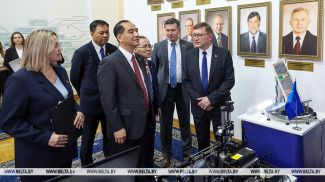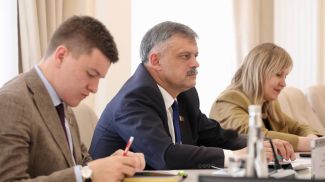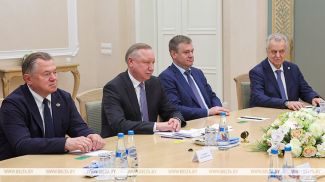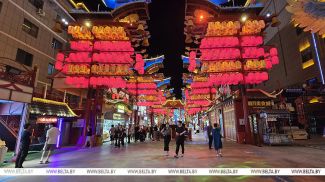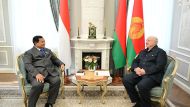
MINSK, 10 September (BelTA) – BelTA’s publishing house has released the book Superposition. Parallel Worlds with assistance of the Information Ministry. The book’s presentation took place at the Academy of Public Administration under the President of the Republic of Belarus.




During the presentation the news agency released a special episode of the “How it was: DOC” project. BelTA’s exhibition Parallel Worlds, which has inspired the book, was also open. Posters of the exhibition reflect two worlds: the creation and development world of the state and the destruction and degradation world of the opposition. The project’s photos vividly demonstrate what Belarusian authorities have accomplished in the last 30 years and what has happened to the opposition over these years. Actions and slogans, creation and destruction are part and parcel of the exhibition and the book.




The texts were written by the head of the analytical center EcooM, member of the scientific advisory group under the State Secretariat of the Security Council of the Republic of Belarus Sergei Musiyenko. He has witnessed and taken part in many political processes in the country. The texts are based on the facts and statistics the author looks at from the point of view of his own experience. It is a particularly valuable approach.


It is a unique publication because it presents the entire diversity of materials from state-run and opposition printed media of the mid-1990s, which are not available to the general public. Newspaper headlines reflect the country’s life at the beginning of the efforts to establish Belarus’ independence. They also reflect the problems and challenges Belarusians faced and how the young state tackled them.






Before the book’s presentation students of the Academy of Public Administration could get familiar with the Parallel Worlds exhibition, which lies at the heart of BelTA’s book. Head of the Ideology Department of Grodno’s Oktyabrsky District administration Vladimir Ignatovich said that the photos on display are not just a testimony to various facts but a reminder of the past. “And it is also a reminder of the accomplishments of our people, of our state. It is not a redundant one,” he believes.
Vladimir Ignatovich praised the way the exhibition presents the materials: “Nothing consumerist or hype about it. Everything is pretty and clear. It was called social realism in the past.”
Head of the State Economic Policy Chair of the Civil Service Institute of the Academy of Public Administration Vladislav Shchepov noted that the exhibition features a unique collection of materials. “Very impressive. It makes one think about this contraposition,” he said.
According to Vladislav Shchepov, the photos remind him of his school years when the country was busy recovering from the accident at the Chernobyl nuclear power plant.
“I am from an area affected by the Chernobyl catastrophe. When we were school students, we went to the town of Yeisk. When we got back, we had practically ideal health parameters and zero radionuclides in our bodies. In other words, the state worked very hard to try to help Chernobyl-affected areas recover from the disaster. On the other hand, there was the so-called Chernobyl march, which is clearly visible in one of the photos. It also gives reasons to think about things. I wouldn’t like such things to repeat,” Vladislav Shchepov added.





